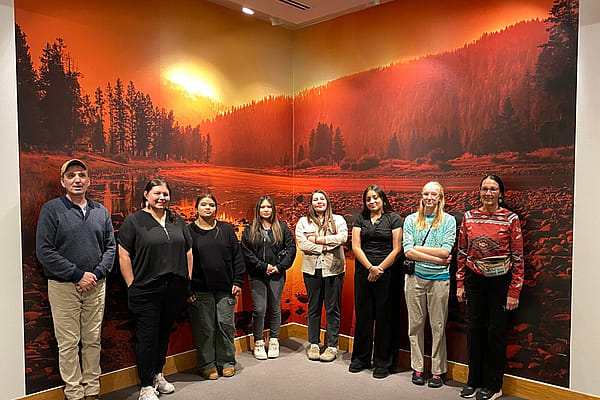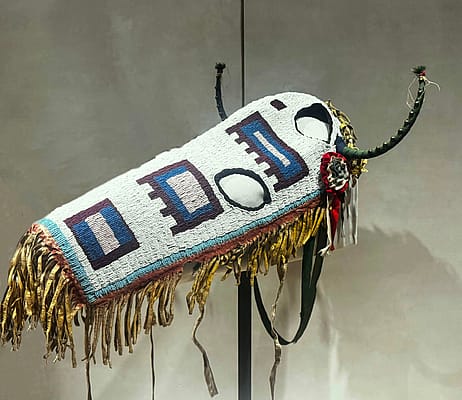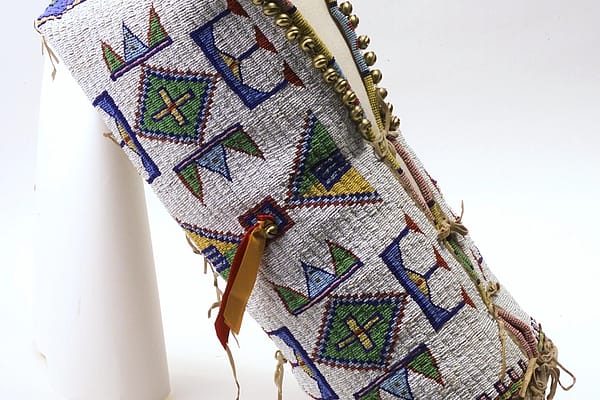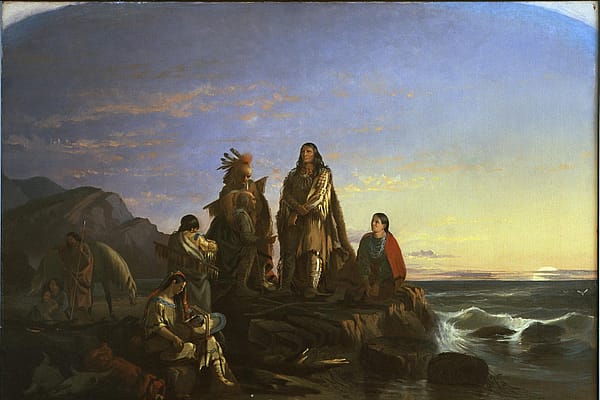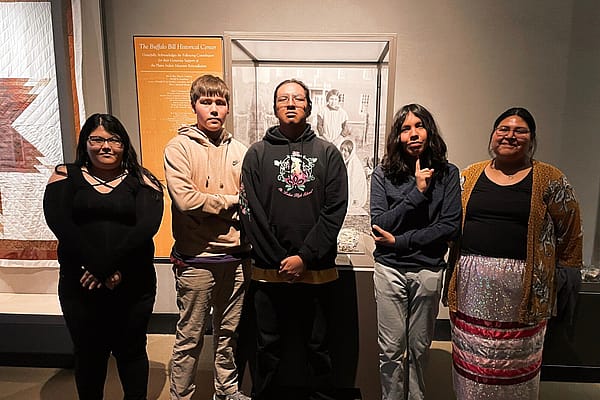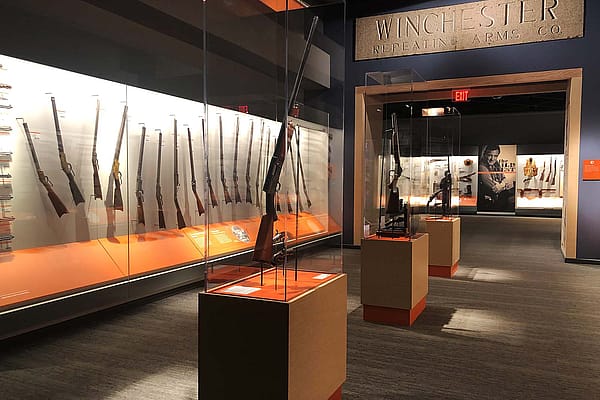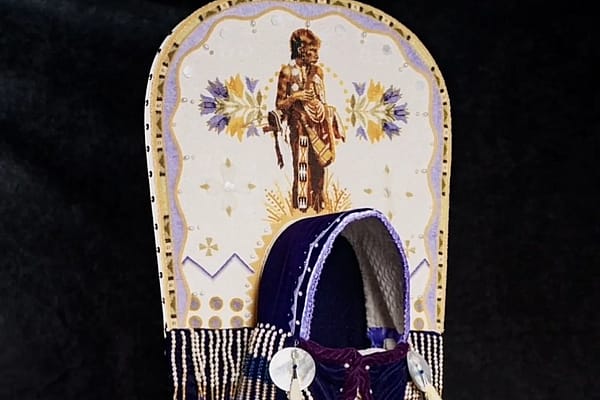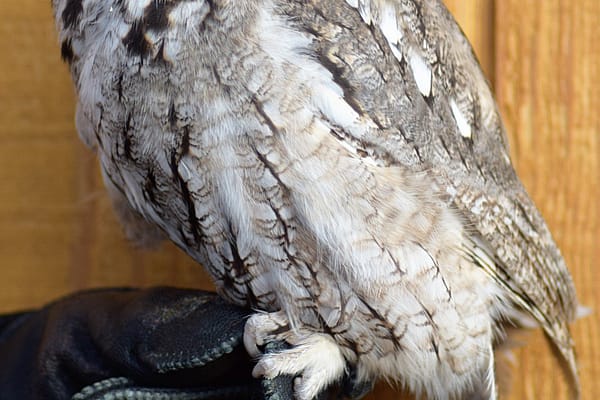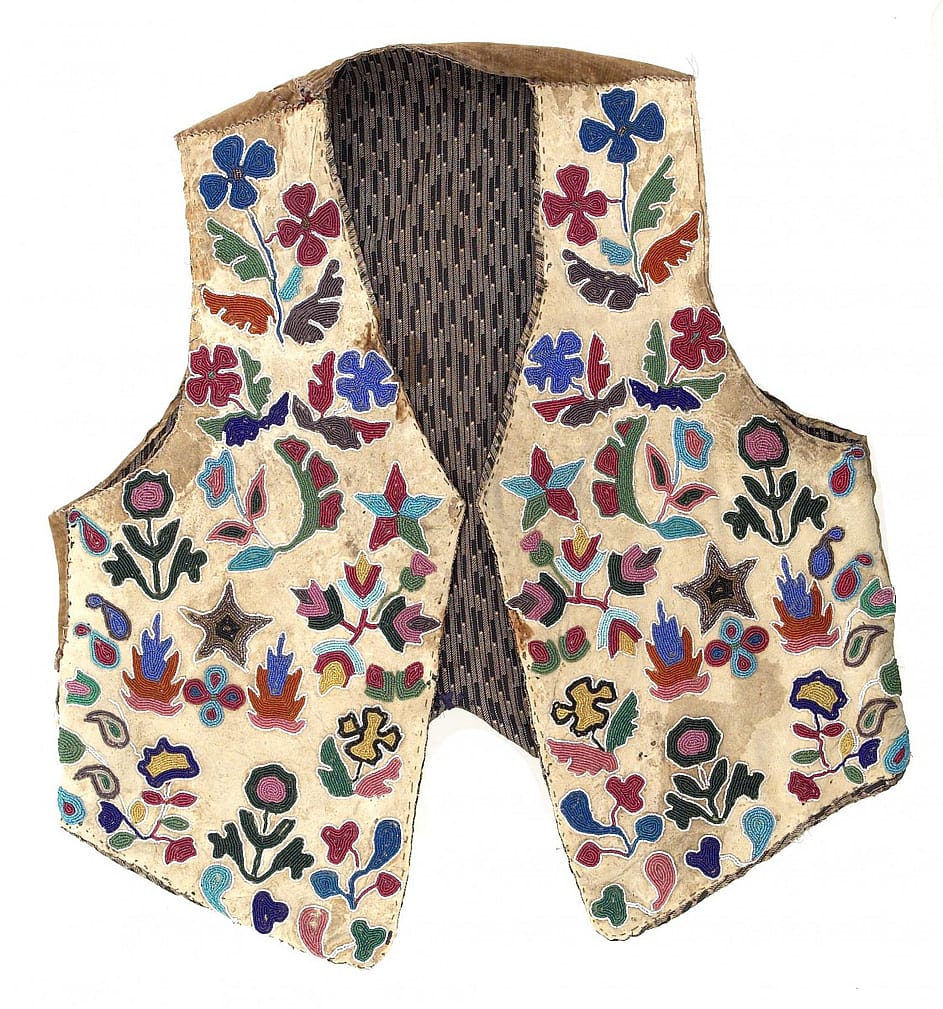
Museum Minute: Transformation of Sioux Florals
The Dakota people are well-known for their use of florals in their embroidery. Around the 1870s, they depicted abstract natural world scenes like stars and flowers.
Hunter Old Elk, the curatorial assistant of the Plains Indian Museum, said a man’s vest from the Dakota Eastern Sioux Tribe circa the 1880s depicts abstract floral art.
“It has about 20 different floral scenes so this is special since can you see the different uses of floral design,” said Old Elk.
Old Elk said by the 1920s, women were influenced by missionaries, specifically in more realistic floral art.
“What’s interesting about Sioux florals is that they have a shift, so in about 1870, 1880s they are very abstract but start to get very realistic in the 1920s and the lines get cleaner,” said Old Elk. “They are often beaded in a circular design and the lines get harsh and straight and so you start to see how art and bead working is changing.”
She said this shows how women adapted their skills to the changing time. Often this included a change of material. For example, from the more traditional material of hide to cardboard or canvas.
Museum Minute was a series co-produced with Wyoming Public Media (WPM).
Written By
Kamila Kudelska
Kamila Kudelska was the multimedia journalist for the Center and for Wyoming Public Media. In that role she told the hidden stories of all five museums and reported on the news of northwest Wyoming. Kamila has worked as a public radio reporter in California, Poland and New York. She enjoys skiing (both downhill and crosscountry) and loves to read. Since has since taken on a larger role with Wyoming Pubic Media.


